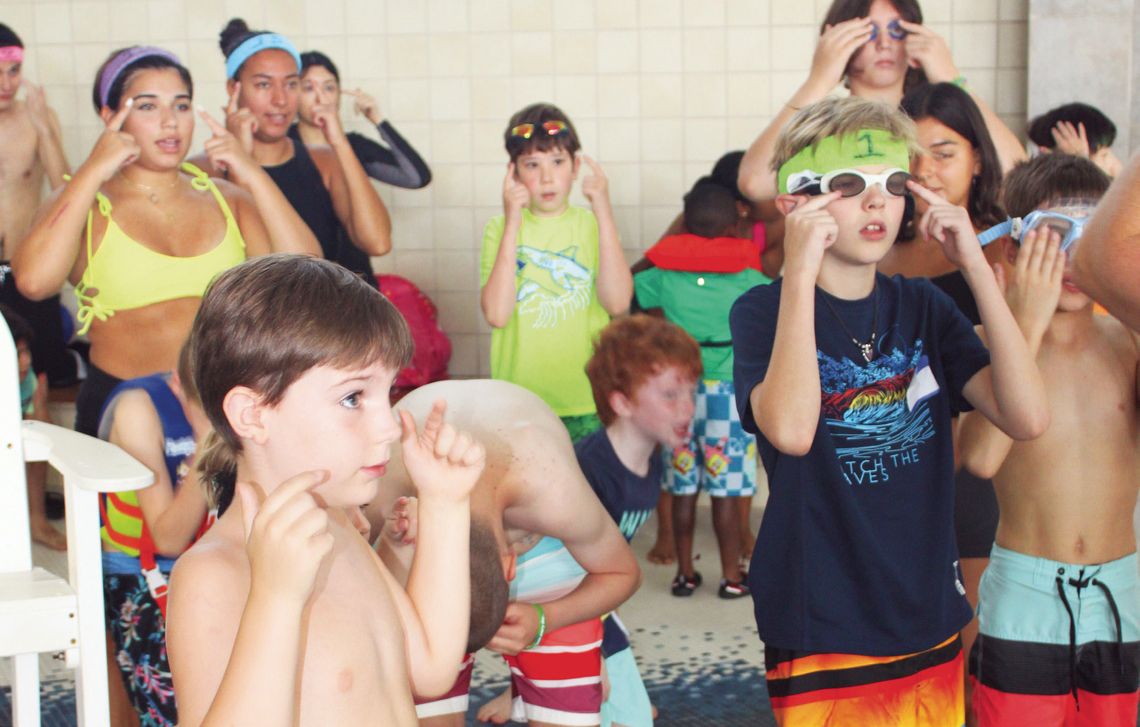TEXAS STATE UNIVERSITY
TXST Autism Camp offers innovative approach to prevent drowning
Autistic Children are 160 times more likely to drown than their typically- developing peers, according to Jenn Ahrens, Texas State University Health and Human Performance Department clinical associate professor. Ahrens is also the director of Texas State University’s Autism Summer Camp, which has a new swim program that implements an innovative pre-swim ritual to prevent drowning by drawing attention to the child and stopping them from fleeing directly into the pool.
The pre-swim ritual is simple but effective. Ahrens has taught kids to do the dance for Head, Shoulders, Knees and Toes three times before they are allowed to enter the water, which has become part of their swim routine.
“We've implemented that due to concern for elopement [fleeing from a parent or guardian without warning] of kids with [Autistic Spectrum Disorders],” Ahrens said. “If they are doing something that stops them from getting away from their parents or guardian, whoever it may be, and going straight into the pool, then it catches the attention of someone, a bystander or a lifeguard or somebody, and they notice that they're doing something that's out of the ordinary. If they can see them doing that, they have a better or greater chance of catching them before they're at the bottom of the pool.”
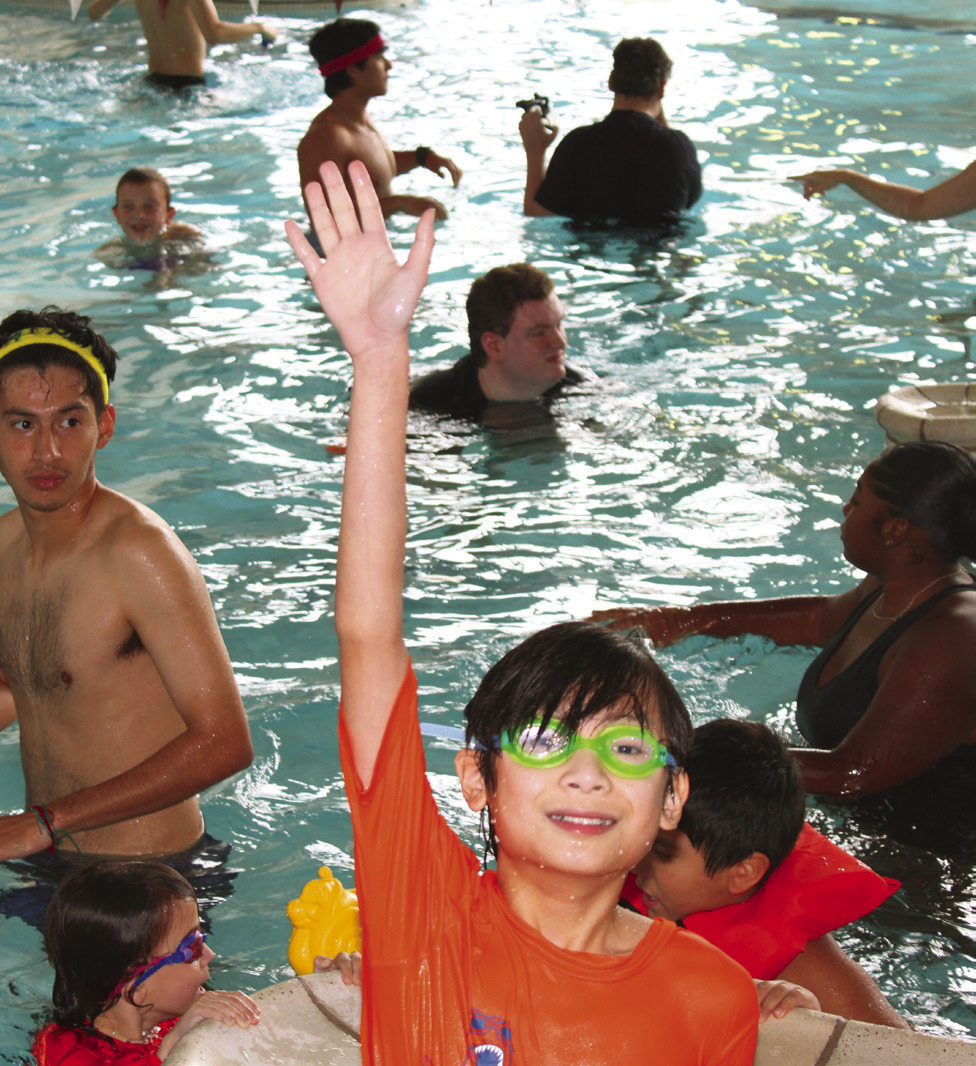
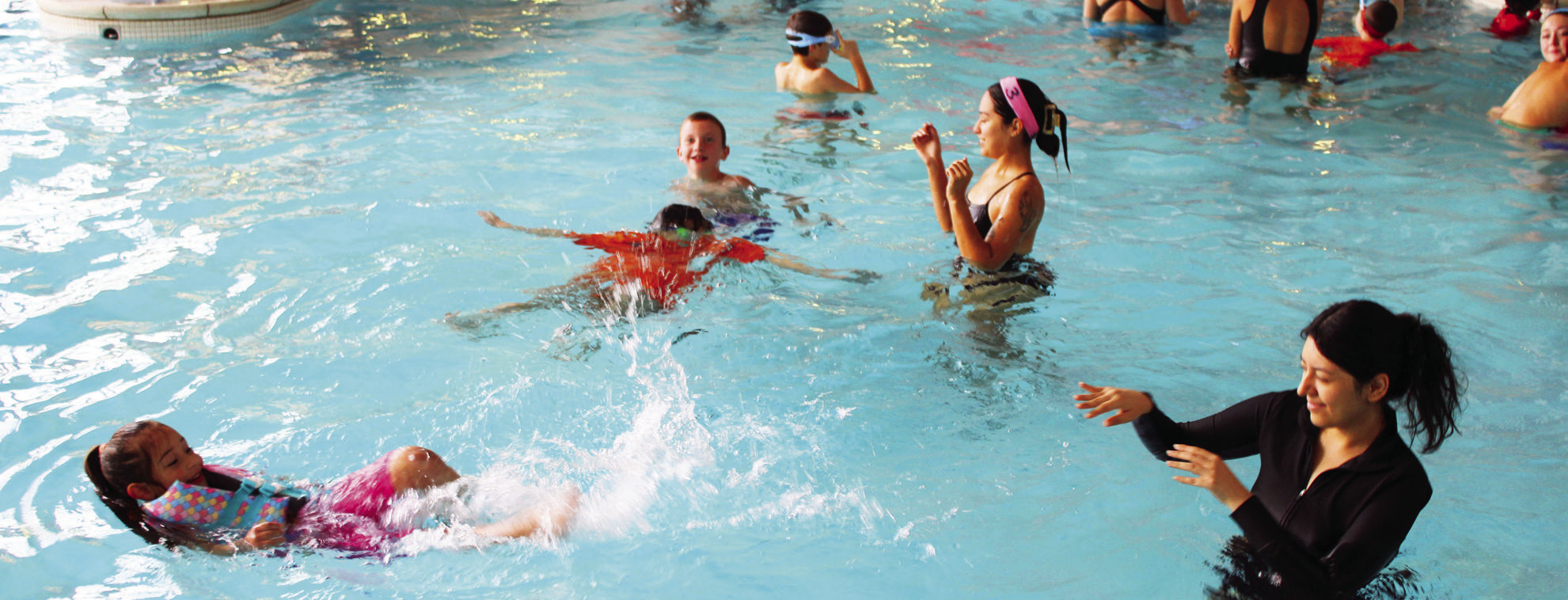
Above, Theo Newgard waves to the camera. Below, the kids practice kicking. Daily Record photos by Shannon West
Children with autism are often self-governed by rules and prefer schedules and repetition, which Ahrens felt could work in their favor with swimming.
“A lot of times kids with autism, they love to hear what the rules are for the day. They like to see a schedule. So all over our camp, we have the schedule posted. We have the camp rules posted,” Ahrens said. “It's kind of the same thing with the motor system. If visually they can see the rules, and then in their motor program we can get them guided by that set of rules. So every time they see a body of water, they can remember, ‘Oh yeah, I have to do Head, Shoulders, Knees and Toes.’” The counselors have implemented the technique using a group-teaching method.
“When we first get to the pool and everybody's ready to enter the pool, we have them all stand by the side of the pool, and everyone does it together as a group,” Ahrens said. “Then they will get into the pool using our safe entry method, and then they're one-to-one in the pool with their counselor. If they have to get out to grab a toy, or they get out to go to the restroom and then they want to get back in, they will do it again with their counselor. Their counselor will stop them and say, ‘Okay, do your Head, Shoulders, Knees and Toes.’ So they'll stop and do it again.”
The group method appears to be successful as Ahrens noticed the kids implementing the preswim ritual on their own only two and a half weeks into the camp.
“We've already noticed kids, when they get out of the pool to go grab a toy, they're doing Head, Shoulders, Knees and Toes before they get back into the pool,” Ahrens said. “They're already thinking, ‘Oh, this is a rule. I need to do it before I get back into the pool.’” Ahrens wants the parents to teach this skill at home as well to ensure it sticks.
“We want them doing it before they get into a bathtub, a lake, a river, a backyard pool, a community pool, anything like that, because they are so tied to rules,” Ahrens said. “That's something we're going to educate their parents on as well. Thursday we have a celebration; we're going to tell their parents what they've been doing, and how we want this to continue, because they've already started it.”
In addition to the preswim ritual, the kids are being taught five “aquaticity” skills that are needed to be an efficient swimmer. The counselors often incorporate the child’s “perseverating interest” item — a favorite item that is often a fixation — into the training. Ahrens said the data collected at the camp has shown the inclusion of the perseverating interest item to be a helpful teaching tool.
“The drowning rate [for those with autism], both the fatal and non-fatal drowning rate, is really high,” Ahrens said. “These are small things that we can do to help decrease that number.”
Learn more about the camp at this link hhp. txst.edu/collaboration-outreach/camps/autism- camp.html.
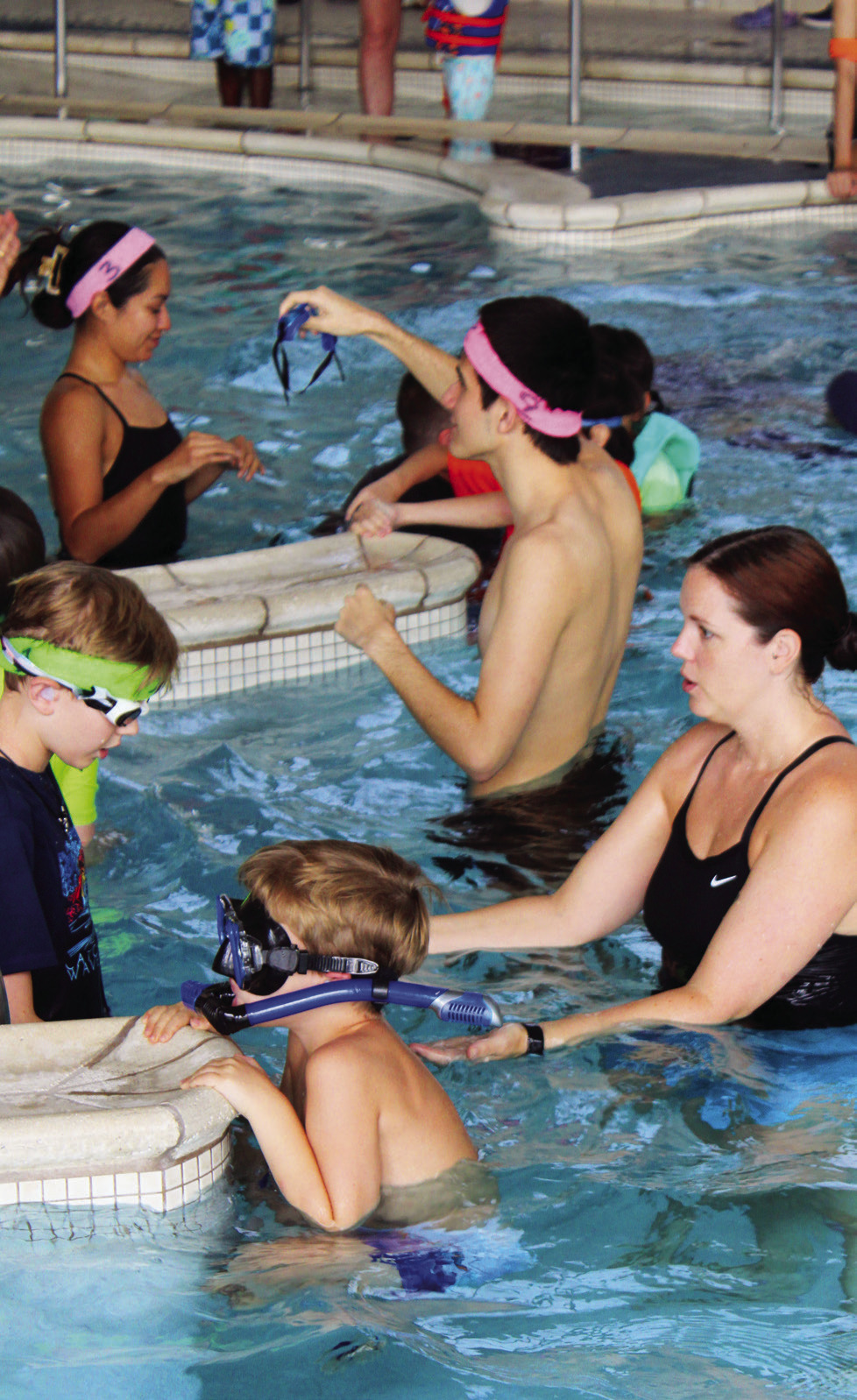
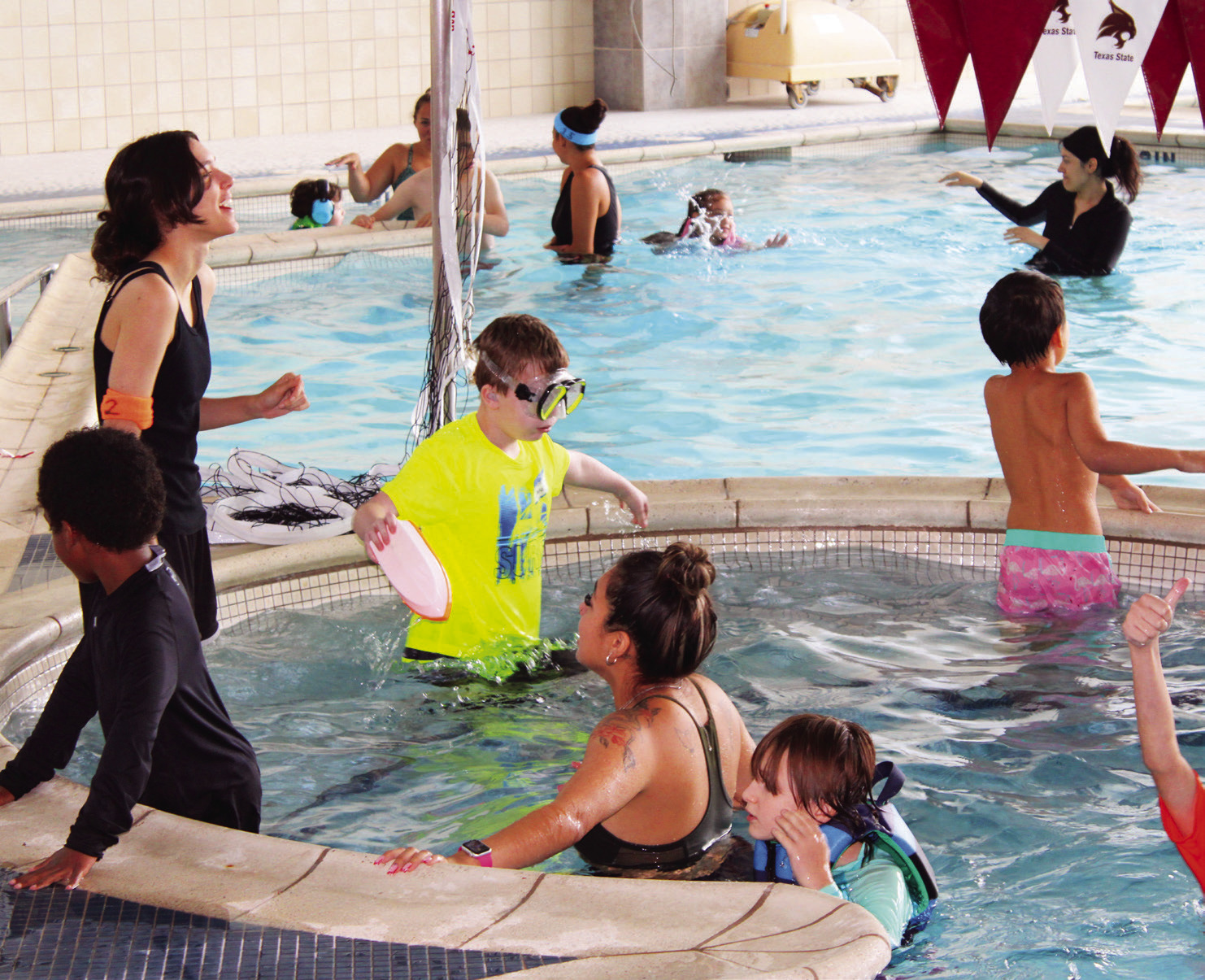
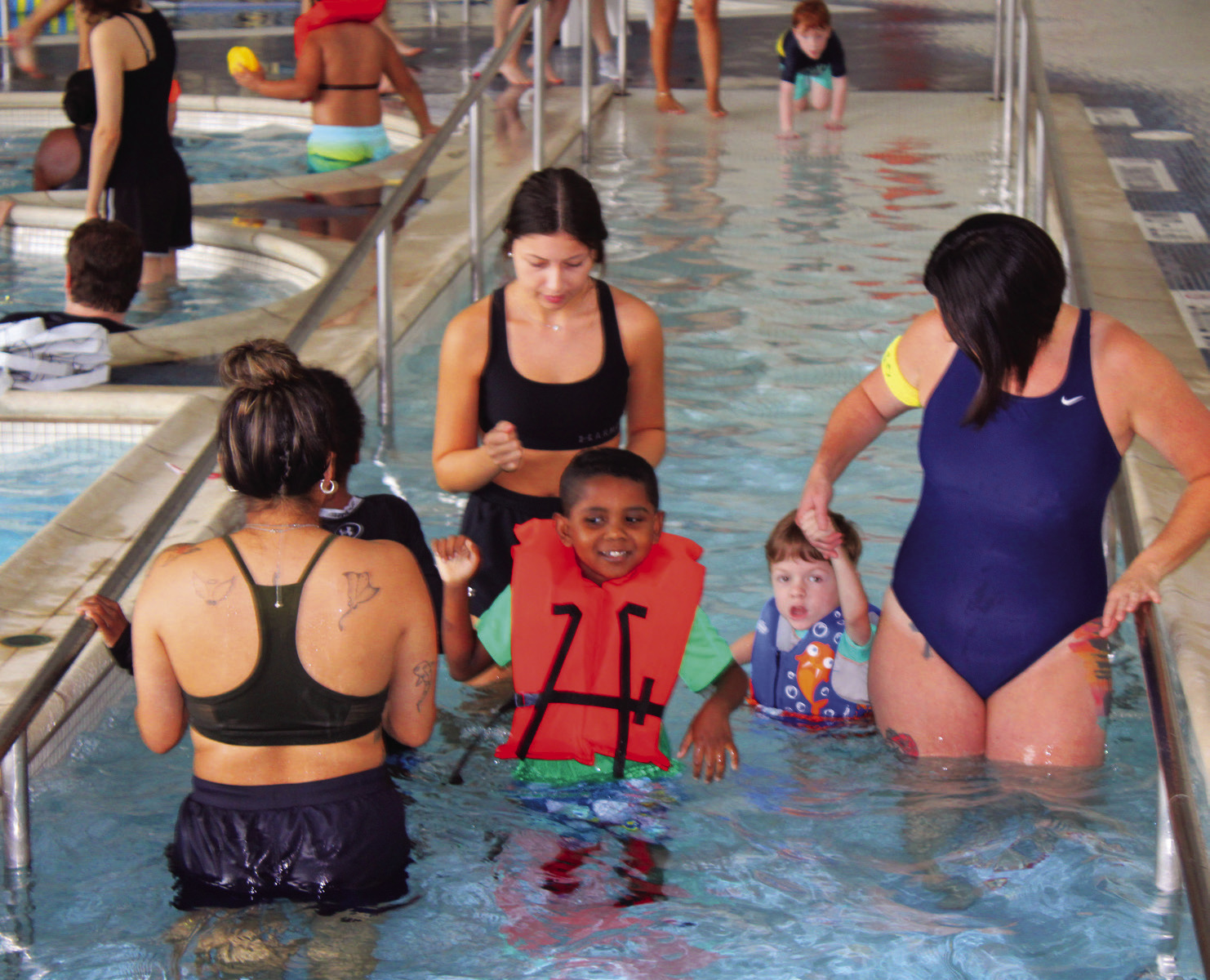
Below, TXST student counselors lead the kids into the TXST pool via the ramp. Daily Record photos by Shannon West


